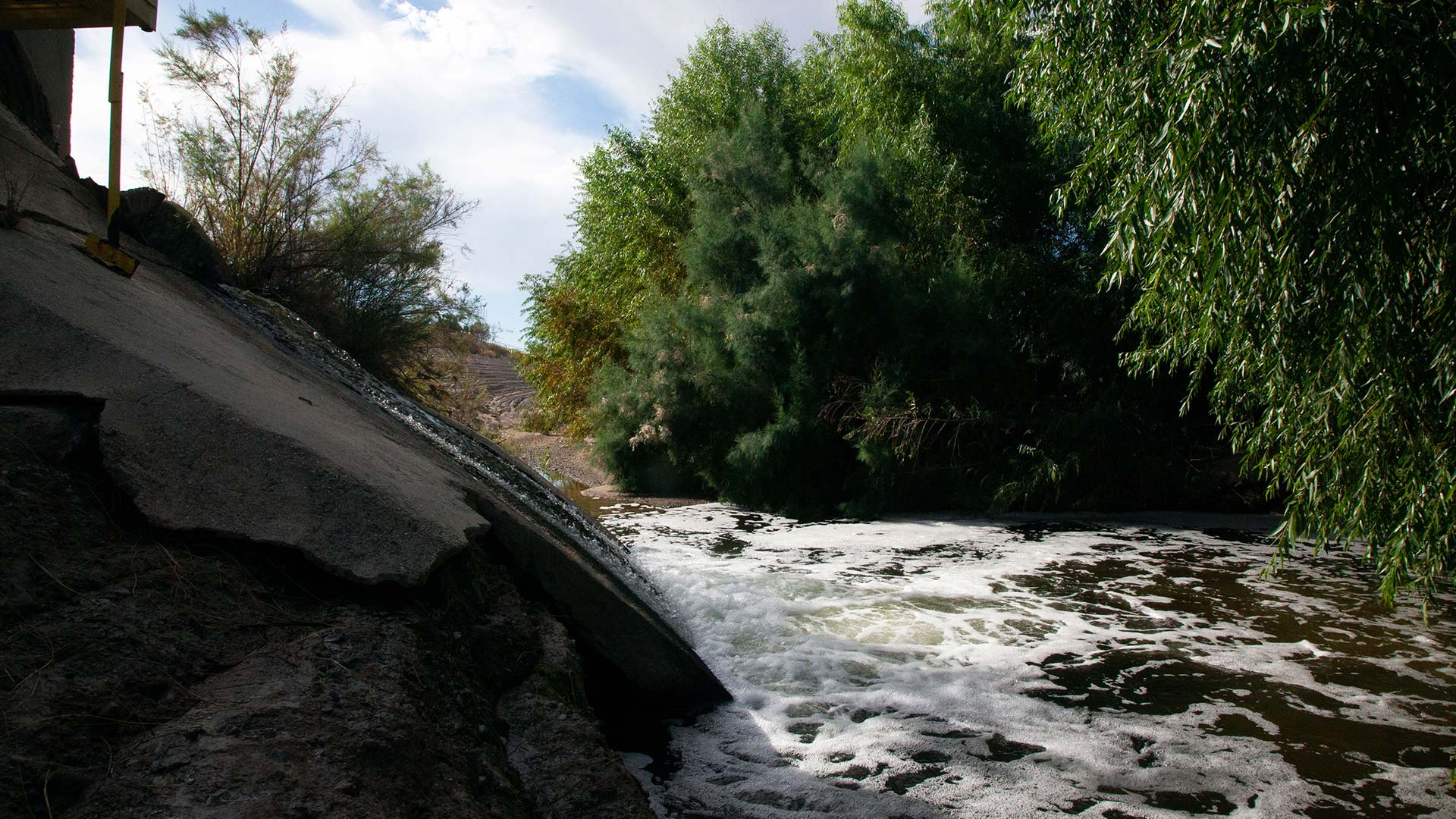 Effluent gushes out of the outfall, into the Santa Cruz River. The outfall of water is constantly flowing, but there is a diurnal fluctuation due to cyclical human water use.
Effluent gushes out of the outfall, into the Santa Cruz River. The outfall of water is constantly flowing, but there is a diurnal fluctuation due to cyclical human water use.
The Santa Cruz River begins in the San Rafael Valley, flowing south into Mexico, before curving back northward, passing through Green Valley, the Tohono O’odham Nation and Tucson, ultimately ending past Marana.
What was once a desert oasis, has been the lifeblood of the Tohono O’odham people, who have been its original stewards for generations.
Luke Cole, director of the Santa Cruz River program with Sonoran Institute attributes Tucson’s existence to the river, stating “It has allowed 12,000 years of people living here and over 4000 years of continuous agriculture.”
However, the Santa Cruz has historically endured significant degradation due to pollution and excessive extraction.
Intensive groundwater withdrawals caused the river’s perennial flows to end in 1913, followed by the end of its seasonal flows by 1940.
Today, it is listed as one of America’s most endangered rivers by the environmental advocacy nonprofit, American Rivers, as water scarcity exacerbated by climate change continues to impact the watershed.
The river depends on a steady water supply, in Tucson, is provided by the Colorado River through the Central Arizona Project (CAP).
Decreased water availability or restrictions could also reduce flows in the Santa Cruz, potentially leading to the use of current groundwater reserves for advanced water purification.
And despite ongoing efforts for groundwater recharge, Cole believes that rehabilitation is still just scratching the surface.
In collaboration with the Wilderness Society, the Sonoran Institute is pushing for getting the river established as an Urban National Wildlife Refuge.
The designation would offer federal protection for native and migratory species that use the river by establishing parcels and creating an acquisition boundary for future protection.
“These refuges very specifically are supposed to remedy environmental injustice,” Cole said. “By establishing a refuge and identifying properties that could be donated to or purchased by the federal government, they create an open space, they create a community amenity to a community that is constantly under threat from development, encroachment [and] overuse.”
While acknowledging the progress made in the past 15 years, Cole remains hopeful about the river’s future.
In 2008, nearby wastewater treatment facilities began to upgrade and have since put clean water back into the river, replenishing the aquifer and restoring about 35 miles of perennial flows with treated wastewater.
The effluent-dominated Santa Cruz now supports native fish like the gila topminnow, dragonflies, bobcats, migratory bird species and other wildlife.
Of the listing as endangered, Cole said that it isn’t a “doom and gloom thing at all.”
“I think it is really saying this is a waterbody of massive importance for the wildlife that use it, for the cultural history, the indigenous history of this river and what this river has provided to this land,” Cole said.
At any given time, visitors can find people birding and biking around the Chuck Huckleberry Loop, peeping dragonflies or participating in a voluntary river-clean up event.
“This is a river with great value, but it’s like a toddler in terms of its recovery and we need to make sure that we continue to shepherd it so that it can grow and become more resilient to climate change to use to other sources that may be wanting to pull water from the river,” Cole said.
Efforts to establish the Santa Cruz River as an Urban National Wildlife Refuge have been ongoing for about three years, garnering support from a coalition of about 50 partners.
To meet the standards outlined by the US Fish and Wildlife Service (FWS), including identifying benefits to communities affected by environmental injustice, a value to wildlife and available funding and property, the groups are preparing a Land Conservation Design (LCD) for submission.
“Our expectation and the trajectory that we are seeing is that by November, we could have the designation of a Santa Cruz River Urban National Wildlife Refuge,” Cole said.
Currently, the FWS manages 101 existing urban refuges within 25 miles of cities with populations of 250,000 people or more.

By submitting your comments, you hereby give AZPM the right to post your comments and potentially use them in any other form of media operated by this institution.